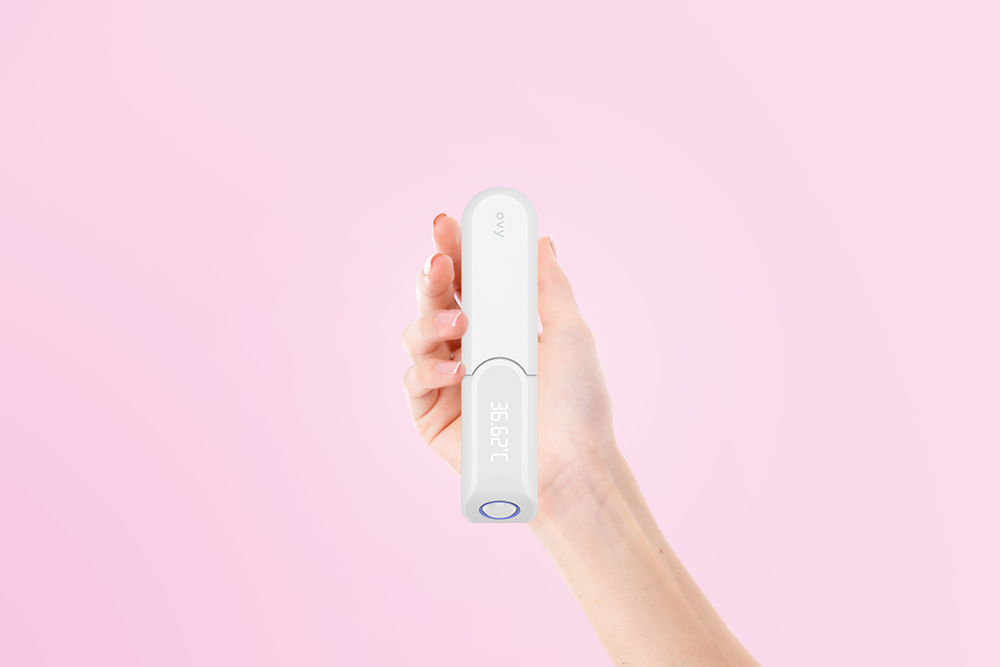Key Takeaways
- Neben der Basaltemperatur ist die Zervixschleimqualität ein wichtiges Körpersignal für die Auswertung nach der symptothermalen Methode.
- Die Zervixschleimqualität wird in die Kategorien ø, t, f, S oder S+ eingeteilt.
- Im Artikel erfährst du, wie du deinen Zervixschleim regelkonform auswertest.
Women have been using the symptothermal method (NFP) as a hormone-free alternative to the pill and as a means of conceiving for decades.
As well as measuring the basal body temperature, assessing the cervical mucus increases the reliability of the calculation. This involves monitoring the cervical mucus on a daily basis, which means: removing from the vagina and examining its appearance and consistency.
However, women who have only just started reading their own body signals are often not very confident, due to the lack of experience and practice. The next sections explain how to monitor your cervical mucus and clarify what you need to bear in mind.
Is cervical mucus the same as discharge?
The cervix (cervix uteri) is the neck of the uterus – i.e. the lower part of the uterus – which connects the uterus to the vagina. During a cycle, the cervix produces a type of mucus. This mucus should not be confused with discharge, which is produced as a result of illnesses or infections. Discharge is often accompanied by itching or pain. Cervical mucus is also not the same thing as “arousal fluid”.
How does the cervical mucus change throughout the cycle?
The cervical mucus changes over the course of the menstrual cycle in terms of volume, color, and consistency, due to the influence of different hormones. With regular monitoring and practice, it can be used as a reliable means of determining the current cycle phase and the precise time of ovulation.
What is the task of the cervical mucus?
The function of the cervical mucus is to carry sperm to the egg cell to encourage fertilization.
How do I check the cervical mucus?
Every woman is different, of course, and has to discover for herself what her preferred method of monitoring her cervical mucus is. To ensure the monitoring provides robust results, the mucus has to be checked at the same time every day – and even several times a day during the initial phase.
You should be aware of how your vagina feels: there may be a moist or dry feeling, sometimes even some itching.
You should also examine what you see. You can see the actual cervical mucus itself, for example, in your underwear. You can also remove the mucus directly from the entrance of your vagina using your fingers, ideally before going to the bathroom. In some women, the mucus doesn’t flow all the way down to the entrance of the vagina. In this case, it can be removed directly from the cervix (around eight to ten centimeters into the vagina).
How does the cervical mucus change around ovulation?
Around the time of ovulation the cervical mucus becomes stretchy, which you can check using toilet paper. This helps you to see whether the cervical mucus pulls apart like threads.
You can also check this using two fingers. Stretchy cervical mucus feels similar to raw egg white and often looks like it, too. Some women notice that, when peeing, and with a little pushing, the cervical mucus already comes out in long threads. It then floats on the surface of the water.
What does it mean if I can’t see any cervical mucus?
The changes described here are very different depending on the individual. Whether your cervical mucus matches the description above, looks different, or you don’t notice it at all, it doesn’t mean that you haven’t ovulated.
Of course, self-monitoring requires a few cycles of practice, especially for women who aren’t that familiar with their own body and natural cycle.
Women who notice a very small amount of cervical mucus, or even none at all, can check their cervix instead, and use this – in addition to body temperature evaluation – as the second body symptom. Following the symptothermal method by evaluating the basal body temperature and cervix is just as reliable.
How do I evaluate the cervical mucus?
The next step is to evaluate the consistency of the mucus. In principle, the change in the cervical mucus can be split into three phases.
Start of cycle: just a small amount of mucus is produced right after menstruation, and the vagina feels dry or just slightly moist. The cervical mucus is a more cloudy, yellowy color, and lumpy or thick in consistency.
Ovulation: just before ovulation the vagina becomes more moist and the body produces more cervical mucus. It is clear, can be stretched between your fingers, and resembles raw egg white in consistency.
End of cycle: the mucus becomes thicker, more creamy and whiter again.
How do I document the changes using the NFP approach?
The different phases and corresponding changes in the sensation of your vagina and in the cervical mucus are indicators of the current phase of your cycle and, in particular, the time of ovulation.
Cervical mucus monitoring is based on two principles: sensation and observation. The cervical mucus is monitored throughout the day and the results are entered into the Ovy app. If the quality of the cervical mucus changes, you can enter both sets of data into the app. Later on, the value that has a higher quality is factored into the evaluation. According to the symptothermal method, there are abbreviations for each phase of your cycle, which are as follows:
How do I use the Ovy app to document the results?
Your observations of your cervical mucus on any given day are summarized and entered into the Ovy app using the corresponding abbreviations (t, ∅, f, S, S+ or (S), (S+)).
You can make observations during the day, or in the evening, or even several times a day if you notice deviations. The cervical mucus with the best quality for the respective day is the one factored into the evaluation.
Even though not strictly required by Ovy, the quality of the cervical mucus should be entered in addition to the temperature data around the time of ovulation in particular. Particularly if Ovy is being used for natural birth control.
Medically Reviewed
This text was created by medical editors on the basis of specialist medical literature and current studies. Our aim is to work scientifically, identify sources and regularly check that the content is up to date.
References & Literature
- Leitlinien der Deutschen Gesellschaft für Gynäkologie und Geburtshilfe Juli 2004, pro familia
- Pearl-Index, Methode. "3.1 Übersicht und Pearl-Index." Facharztwissen Gynäkologie 3 (2021): 42.
- Struck, Dorothee. Verhüten ohne Hormone. Stadelmann Verlag, 2019.
You might also be interested in these articles
Verhütung
Farewell cocktail of hormones! That’s what happens in your body when you stop the pill.5 Min. Lesezeit





